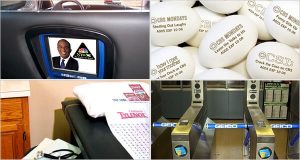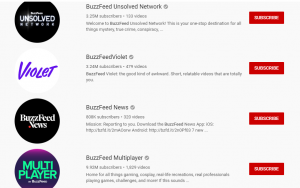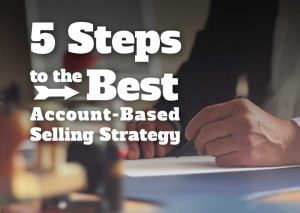— March 24, 2019
There’s a famous story you’re no doubt familiar with about a menacing giant who was so ferocious that even the bravest of warriors didn’t dare to challenge him. Trained from birth as a warrior and ever so confident in his abilities, he challenged the warriors of Israel to one-on-one combat — winner takes all.
Only one champion stepped forward. He was not a king or a warrior — he was a young shepherd. He entered the battlefield void of any armor and armed only with some rocks and a slingshot. Instead of critically evaluating his opponent, the giant laughed loudly at the challenger, assuming him to be of little threat. Before the giant could finish his belittling laughter, he lay dead at the young shepherd’s feet, killed by a single stone to the head from a slingshot.
The story, of course, is that of David and Goliath, and it has become the quintessential underdog story, inspiring generations of ‘Davids’ to face their ‘Goliaths’. But there’s another lesson in this story, one that often gets overlooked, and that lesson is not for the Davids but the Goliaths of the world: Never underestimate your opponent.
Goliaths are at the top of their game. They are unchallenged leaders in their industries with resources vast enough to crush any direct competition. But Davids don’t play by the established rules — they make up new rules.
For the past century, large CPG brands have had almost absolute power over the retail landscape. If a consumer wanted quality soup, they bought Campbell’s; quality ketchup — Heinz; quality toothpaste — Colgate; etc. If a consumer wanted to save money, they could buy the private label store-brand version — compromising on quality in exchange for a lower price. That was it. Those were the options. It was the big name brands or the knock-off. There was no need to watch out for David because he couldn’t even afford to get his product on the shelf. But don’t forget, David doesn’t play by the rules.
For CPG companies, the rules have changed, and that change is being led by an army of Davids in the form of increasingly powerful private-label brands and newly established direct-to-consumer (DTC) brands. According to Nielsen data, the collective market share of 16 of the largest CPG manufacturers (combined sales of $ 233 billion) has declined over the past five years from 33% to 31%. Conversely, 16,000 smaller manufacturers (combined sales of $ 145 billion) saw their collective share of the market rise from 17% to 19% over the same time period.
The Reinvention of Private Label
Much like the purses for sale on the streets of New York that read ‘Prado’, store brands originally started out as lower quality but less expensive versions of the real thing.
That is no longer the case.
In some product categories, store brands are on-par or pricier than name brand options and consumers are increasingly developing brand loyalty to store brands. Research from CB Insights indicates that U.S. private label brands are poised to take 25% of dollars in the coming decade; in 2017, private-label food sales grew three times faster than the sales of national manufacturers. Infact, as per a recent study Millennials’ shopping baskets contain 32%private label as compared with a typical cart, at 25%, and I don’t have to tell you why this segment matters!
What was once a mutually beneficial synergy — where stores provided shelves for CPG manufacturers’ products and in turn, those products brought customers into stores — has now become a precariously balanced and forced partnership between two rivals in ruthless competition for a bigger piece of the same (brand name) pie.
Kroger: From Greatest Ally to Greatest Threat
Kroger, the third largest retailer in the world, is swiftly moving from powerful CPG ally to fierce competitor as its private-label brands continue to gain momentum.
According to CB Insights, the combined sales for Kroger’s store brands tops $ 20 billion — compare that to the total sales of popular name brands such as Smucker and Campbell Soup, which were $ 7.3 billion and $ 8.1 billion, respectively. Kroger’s Our Brands alone accounted for almost 30% of all unit sales at the retail behemoth and its Simple Truth brand saw 19% year-over-year growth in 2017.
From Value to Lifestyle
Many store brands have developed such a brand identity that consumers don’t even recognize them as private-label anymore.
In Canada, Loblaws’ President’s Choice has created an entire brand experience which has inspired legions of (store) brand loyalists. Marketing for President’s Choice focuses primarily on the enjoyment of meals with friends and family, especially with the newest #EatTogether campaign. The products are secondary and price isn’t even in the equation. No one buys President’s Choice to get a deal, they buy it for the experience.
Let’s Talk About the Amazon in the Room
From inauspicious beginnings as an online book seller, Amazon has risen become the most valuable public company in the world. A feat that’s even more impressive considering the company will be celebrating its 25th birthday this July. Moving far beyond books, Amazon is now a purveyor of all things, including over 100 private-label brands created over the past 10 years in everything from batteries to granola bars.
Recent studies show that Millennial consumers are much less brand-fickle than their brand-loyal predecessors, viewing private-label not as the discount version but as on par with many name-brand products. And of course, Millennials have an affinity for online shopping and in particular, Amazon (the e-commerce juggernaut is expected to capture almost half of all online shopping in the U.S. in the next couple years). As the purchasing power of this demographic cohort continues to increase, so too will the fortunes of private-label and Amazon.
Amazon’s prolific assortment of private-labels is not just for show — its private-label business is already generating $ 7.5 billion in yearly sales and poised to reach $ 25 billion by 2022. This meteoric success can be attributed to Amazon’s proficiency in data-mining — its stable of private-label products are based directly off top-selling brands in its marketplace and the behavior of its customers.
In 2017, Amazon made a $ 13.4 billion foray into the grocery business with its purchase of Whole Foods, giving the e-tailer its first bricks-and-mortar outpost as well as inventory to launch into online grocery, an area that has been lagging in fresh categories such as vegetables, fruits, and meats.
While traditional brick-and-mortar stores can do little more than give favorable positioning placement to their private-labels, Amazon can go a step further by ensuring its private-labels show up prominently in product searches. Additionally, Amazon has data that no one — and certainly no bricks-and-mortar retailer — has: Amazon knows the shopping patterns of its customers. It knows if someone has looked at an item and chosen not to buy it and it knows what products that customer typically shops for; it also knows exactly who that customer is and has their email for direct contact.
Amazon is already staking its claim on the future of shopping with its voice-activated assistant, Alexa. Research from Bain & Co. found that in categories where Amazon sold private-label products Alexa recommended those private-labels 17% of the time, while private-label only represents 2% of the site’s volume, showing a clear bias.
From humble beginnings, Amazon is now poised to present CPGs with one of their biggest threats yet.
The Rise of Direct-to-Consumer (DTC) Brands
If you’ve never heard of a direct-to-consumer (DTC) brand, you’ve almost definitely done business with one. DTC is more than a sales channel, it’s an entire customer experience; one that is embraced by some of the most valuable companies in the world (Apple) all the way down to niche start-ups (Glossier).
The main differentiator of a DTC brand from a traditional brand is that absolutely everything is built around the customer experience. The manufacturer controls everything from the research to design to sales channel to post-customer experience — completely leaving out the retail ‘middleman’ and focusing all efforts on customer experience.
The typical customer journey for a DTC brand is all online. Browsing social media on his or her mobile phone, a customer sees an ad or influencer post about the brand and its products. The consumer visits the brand’s mobile site, which is appealing and easy to navigate. The experience is seamless with all the information the customer is looking for easily at his or her fingertips. The checkout is fast and easy with multiple payment methods offered. When the package arrives, it has distinguished, branded packaging that perfectly complements the personality of the brand. If the customer isn’t pleased with the purchase, refunds and returns are processed painlessly without questions. The customer has just had an exceptional shopping experience without leaving the comfort of his or her mobile phone.
The rise of mobile commerce and companies like Shopify, which make it possible for anyone to set up an ecommerce site in minutes, have made it possible for DTC brands to come to market quickly and cheaply. For decades it was impossible for anyone except the behemoths to compete in the CPG space — to secure shelf space of any kind you needed money, and lots of it. Only products that would sell got any interest from retailers. Of course, to drive consumer interest in your brand required marketing dollars, and lots of them. With the rise of social media and mobile commerce, the high barriers to entry in the CPG space were removed, making it possible to compete with nothing more than a website and Instagram account (the modern-day version of a slingshot).
With the latest financial reporting on Kraft Heinz, its tumbling stock price and a $ 15B write-off of the Kraft and Oscar Mayer brands, it’s high time the CPG brands build a robust “offensive and defensive strategy” against the David’s of the world.
Challenging DTC Brands
If you can’t beat ’em, join ’em, right?
The best way forward for CPGs would be to start building direct relationships with end consumers, evolving their current B2B mindset and developing a sales model much closer to that of their DTC competitors.
But it’s not as simple as setting up brands with their own identity and web presence. Consumers are used to shopping for traditional CPG brands through aggregators — one convenient place where all brands are conveniently located. There is no impetus for consumers to go online and purchase their laundry detergent from the Tide website and then migrate to the Kellogg’s website to buy their cereal.
DTC brands have thrived on their value proposition — a clear and decisive purpose differentiating them from their CPG counterparts along with agility, nimbleness, and rapid speed to market. Did you know, a few years back the average time for direct brands to launch the first product was 7 months, today they can launch a product in 4 months!
Whatever the value proposition for a DTC brand was — be it better for you, cheaper, higher quality — it appealed to a specific subset of consumers and then the entire brand experience was designed around delivering on that offer. Shopping a DTC brand is an experience, not a chore; delivering on that value proposition takes a monumental shift in strategic thinking and a cultural shift from the CPG mindset.
This is why it’s unlikely that any CPG companies are going to open their doors as DTC brands tomorrow and be successful. To view their brands through the lens of a DTC entrepreneur, CPGs should ask two questions: (1) What unique benefit is my DTC website offering that makes consumers feel they need to buy directly; and (2) How do I develop an effective customer acquisition strategy?
In answering the first question, CPGs need to establish what unique value proposition they are offering that will convince customers to deal directly with them. This answer could vary widely from offering exclusive products, much like Warby Parker, to personalization to price. This will establish the value proposition that the entire brand identity and customer experience will be built around.
The second question, how to develop a customer acquisition strategy in line with the DTC operating model, will require a fundamental shift in the way that CPGs think about strategy and growth. For as long as they’ve been in business, CPGs have viewed brand growth metrics as the Holy Grail of product success, valuing the growth of brand awareness over more customer-specific key performance indicators (KPIs). Not the case at DTC brands; they live and die by KPIs like customer acquisition cost (CAC) and Lifetime Value LTV)in a customer-driven operation. The focus shift from brand-builder to relationship-builder will be key for those CPG brands that successfully launch their own DTC channels.
Data, Data, Data
Data is not the key to a successful DTC strategy — the key is being able to analyze the data and create actionable insights that can be executed on-demand. DTC brands have been pioneers in the data industry, dedicating substantial resources to its accumulation and analysis. Positions such as ‘Data Scientist’ and ‘Growth Hacker’ are commonplace in a DTC brand environment, but CPGs typically haven’t had access to consumer purchase data as this resides at the retail level.
To successfully compete in the future, CPGs need to build robust data strategies that incorporate first-party data from multiple streams. Much like their DTC counterparts, CPGs must invest in the resources necessary to build and maintain data intelligence centers.
Buying a Seat at the Table
Of the three traditional investment areas for CPGs — mergers and acquisitions (M&A), venture capital, and private equity — overwhelmingly, CPGs are choosing M&A, accounting for 86% of transactions in the last quarter of 2018.
Don’t let the numbers fool you. Many of these acquisitions have not lived up to expectations as the large corporate brands are unable to integrate these agile, nimble companies into their eco-systems. The acquisition strategy followed by Campbell’s cost its CEO her job and has resulted in continued activist investor pressure on the brand. However, Walmart’s acquisition of Jet.com cannot be seen as anything but successful.
For an acquisition strategy to be successful, the acquirer needs to focus on better integrating the teams that come with their acquisition and extending the DTC’s digital innovation culture to the new parent. The purpose of the acquisition cannot be about integrating functional teams to save cost and inflating the top-line, but an opportunity to bring a cultural change driven by technology and data first thinking, within the organization.
Culture & Technology
To be successful in today’s retail environment, brands must be available whenever and wherever customers are looking. Customers aren’t looking for online or offline brands, only brands that make it convenient and simple to shop. In the retail world of tomorrow, the pureplay companies — be it DTC brands or large CPG — will lose out.
Many of the most successful DTC brands understand this. They have built a culture not just around being an online brand, but around being a brand that can respond to and deliver on its customers’ needs. Technology is then leveraged to deliver the experience its customers expect. To truly compete, CPGs will need to transform themselves into technology-first companies driven by consumer insights.
Who Owns the Future — David or Goliath?
Thanks to technology, CPGs are facing new threats, the likes of which they have never seen. Customer data has made it possible for retailers, who were once CPGs’ most valued partners, to build up their own stable of high-performing private-label brands, competing head-on with national brand names. At the same time, small start-ups have taken advantage of the lowered barriers to entry and built up billion dollar businesses (Kylie Cosmetics) without ever having their products appear on a retailer’s shelf.
As Goliath’s misjudgment of David cost him his life, underestimating the power of these rising forces to disrupt the retail landscape could also mean death for CPG brands. In the future, there will be no ‘offline’ or ‘online’ channels, no name-brand or private-label — there will only be brands who can successfully adapt to the ‘new retail’ model and deliver the exceptional experiences their customers are expecting.
A version of this article originally appeared here.
Digital & Social Articles on Business 2 Community
(56)








